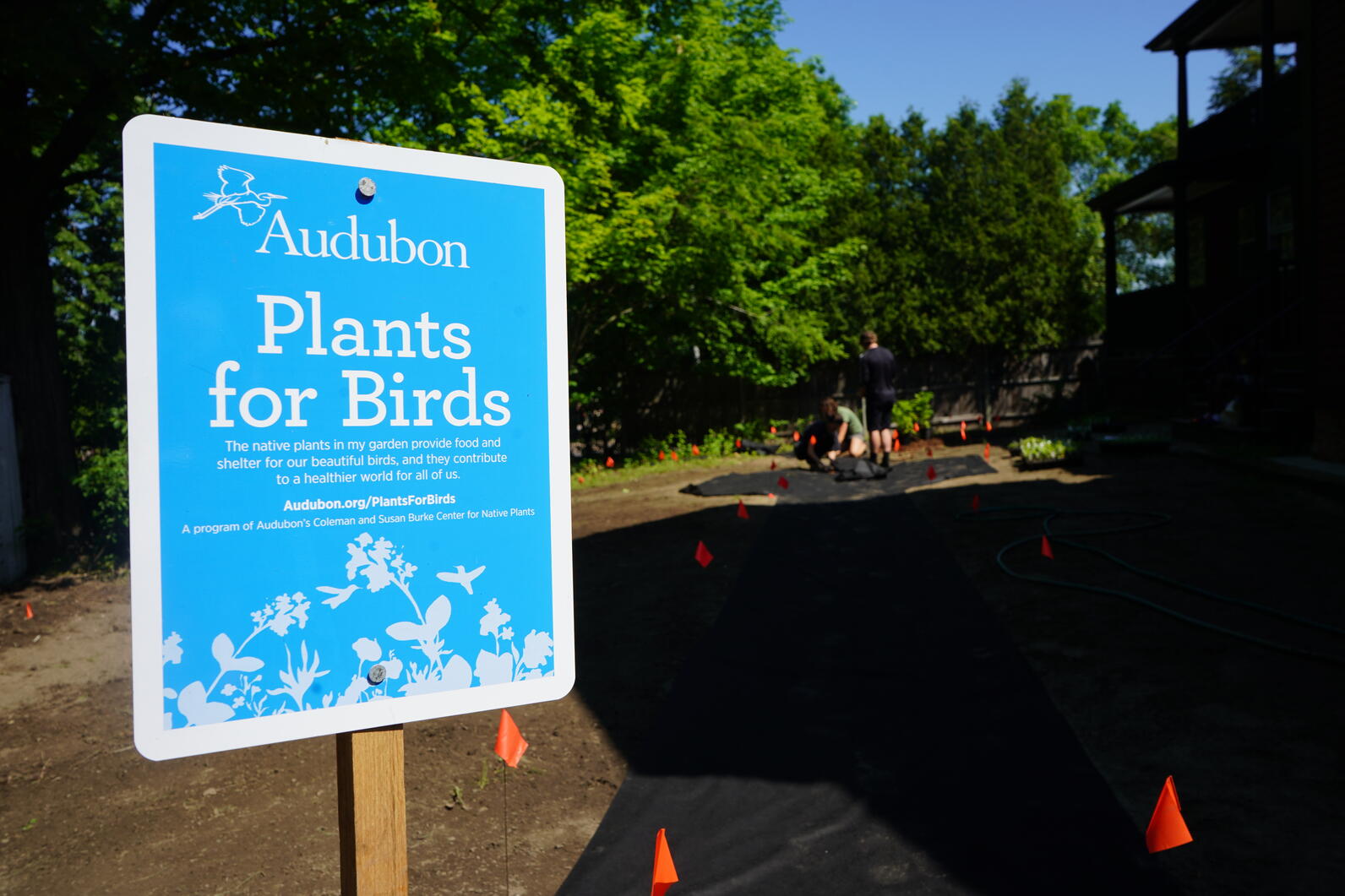Climate change is affecting birds in a big way and one way you can help is to create bird-friendly spaces big or small. Audubon Vermont has been working in Burlington Vermont over the past few years to create spaces for birds. This article dives into how birds are affected by climate change, the needs birds have, and how you can help!
Whether you appreciate them for their song, their beautiful presence at your feeder, or their ability to keep backyard insects at bay, birds are important to us. As a community, we need to make sure these wonderful and curious creatures stick around for generations to come, and Vermont’s birds need our help.
Audubon’s Climate Report estimates that a warming scenario of 3 degrees Celsius will have serious negative impacts for 42 of Vermont’s bird species including the Black-throated Blue Warbler, and moderate impacts for an additional 52 species including the Common Loon. Audubon’s models indicate that 314 species across North America will lose more than 50 percent of their current climatic range by 2080. These numbers are daunting, but we can change this trajectory by making small changes in the landscape and working together as a community.
The issue lies in the 54% of U.S. land that has been developed into the suburban/urban matrix and transformed into a sterile monoculture of turf-grass lawns and decorative alien plant species. Suburban and urban areas are critical for birds, and we can all work to make them more supportive to both migrating and breeding bird species by replacing non-native plants with native plants.
Birds and plants have coevolved in their ecosystems to benefit from each other - plants produce nutritious fruits, nuts and seeds loaded with sugar, fat, protein and antioxidants for the birds - the birds then turn around and disperse these seeds through their poop. This relationship keeps birds alive and ensures that the plants’ genetic material lives on in the area.
The native insects in an area have developed a similar dependence on these plants for their food source and larval host for their offspring. Without native plants, these insects can’t survive and the birds that rely on them for food suffer too. 96 percent of all terrestrial birds in North America eat insects, and their young can’t survive without them. Douglas Tallamy, a world-renowned entomologist found that chickadees need 6,000 to 9,000 caterpillars to feed one clutch of nestlings. Without native plants for the caterpillars to grow on, those birds are going to struggle to raise their young.

The birds need us to make better choices about what we plant. While you may not think that one yard can make a difference, when added together across a neighborhood, the impact can be huge. Burlington is already on its way to building better bird habitat with the Plants for Birds projects around the city. Landowners can get involved no matter the size of your property, by either managing forests with birds in mind, or establishing a small pocket garden with guidance from Burlington Wildways, the birds will thank you. If we each improve a little bit of our own space for the birds, we can provide vast corridors throughout the community that are safe and useful for migratory and resident bird populations.
To get started in your own backyard, try adding some native plants to your garden, building layers of habitat with flowers, shrubs, and trees, consider adding a birdbath or fountain, remove invasive plants, and create a shelter with brush piles or birdhouses. When selecting native plants to incorporate, consider their ecological benefit as some plants support more species than others, and double-check their sun and water requirements for their best chance of survival. Here's a list of some Superstar Native Plants for Vermont. Audubon’s Native Plant Database is a great resource for finding plants native to your area, just enter your zip code and explore filtering the results by plant type, resources provided, and the birds it might attract!




